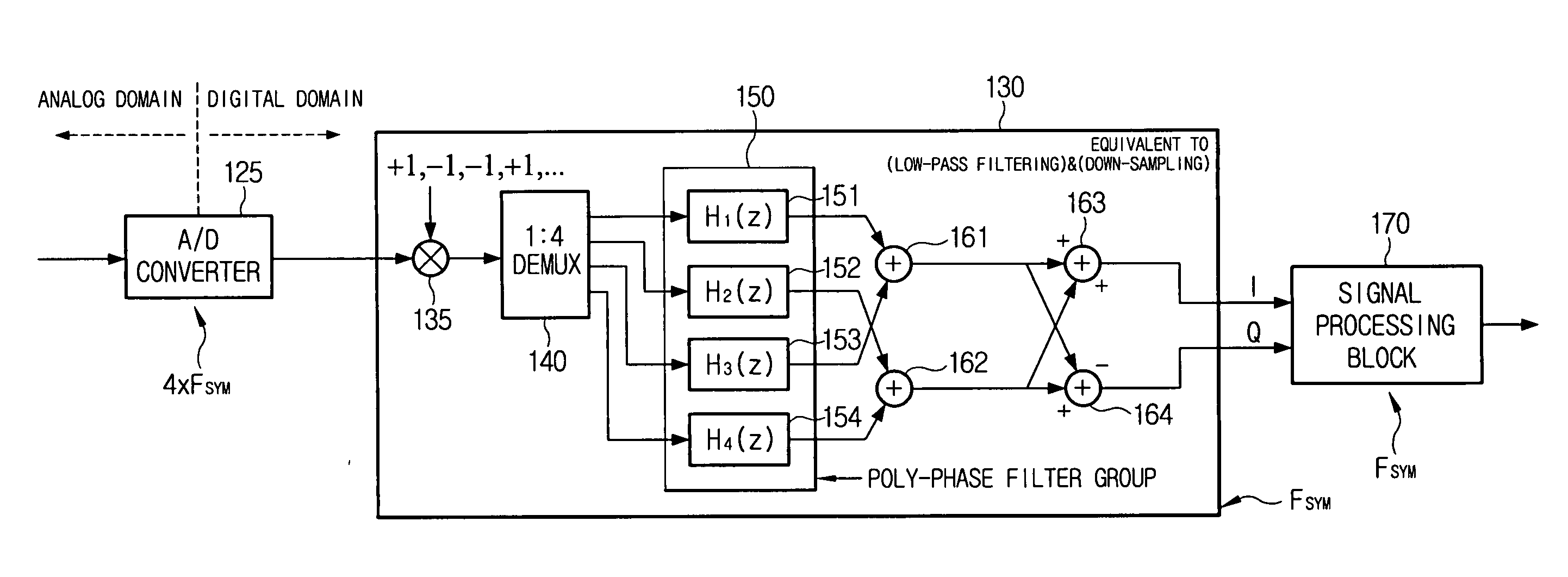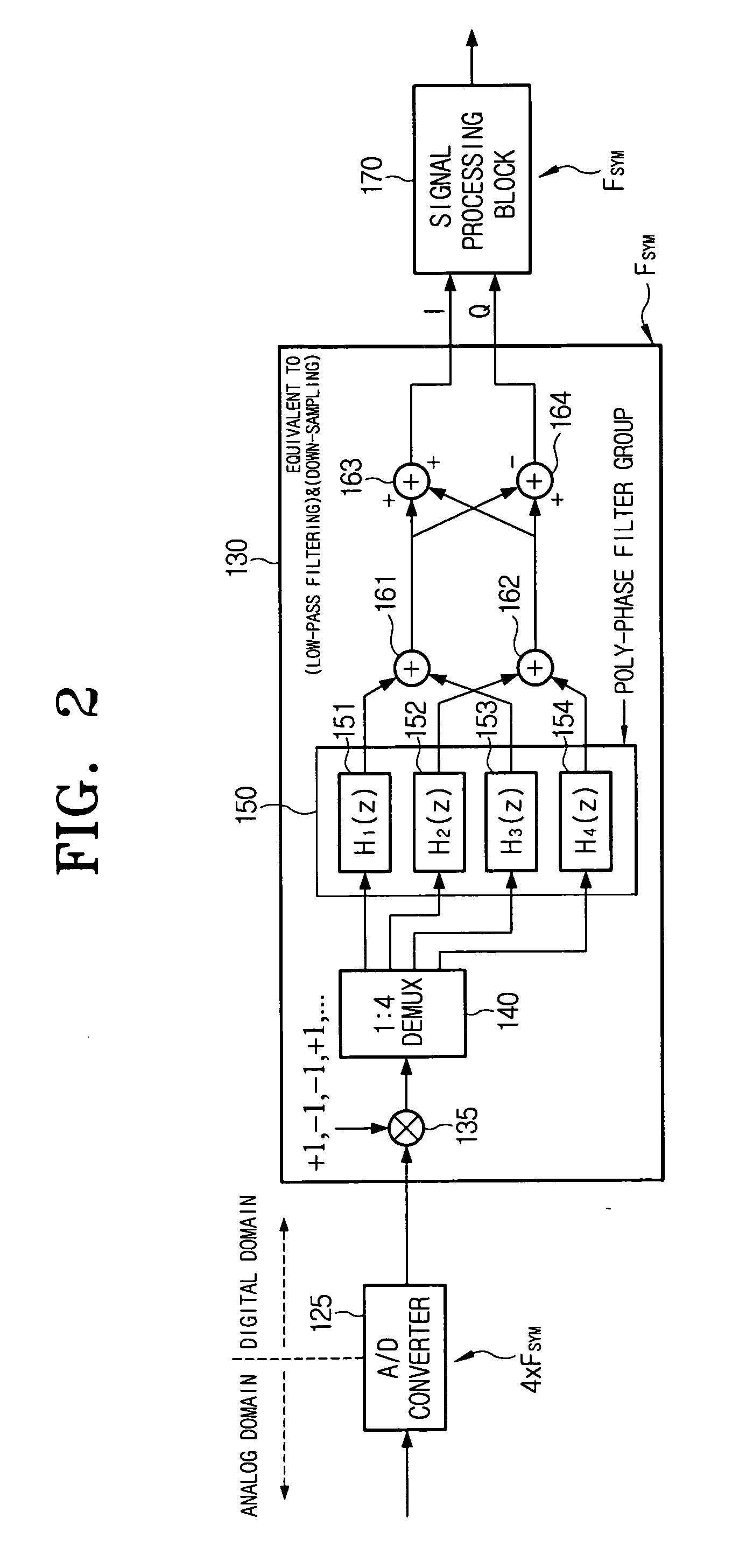Demodulation circuit for use in receiver using if directing sampling scheme
- Summary
- Abstract
- Description
- Claims
- Application Information
AI Technical Summary
Benefits of technology
Problems solved by technology
Method used
Image
Examples
Embodiment Construction
[0029] Certain embodiments of the present invention will be described in greater detail with reference to the accompanying drawings.
[0030] In a general receiver using an IF direct sampling scheme, an A / D converter simply digitizes an IF signal and provides the digitized IF signal to a demodulation circuit. Meanwhile, an A / D converter in a demodulation circuit in accordance with the present invention not only digitizes an IF signal but also provides a digitized signal in response to a clock signal at a frequency four times a frequency of a baseband signal to a demodulation circuit.
[0031]FIG. 2 illustrates a block diagram of a demodulation circuit for use in a receiver using an IF direct sampling scheme, in accordance with one embodiment of the present invention.
[0032] A demodulation circuit 130 includes a mixer 135, a DEMUX 140, a polyphase filter (PPF) 150, and an LPF comprised of a plurality of adders.
[0033] The mixer 135 receives a coefficient corresponding to the sine values ...
PUM
 Login to View More
Login to View More Abstract
Description
Claims
Application Information
 Login to View More
Login to View More - R&D
- Intellectual Property
- Life Sciences
- Materials
- Tech Scout
- Unparalleled Data Quality
- Higher Quality Content
- 60% Fewer Hallucinations
Browse by: Latest US Patents, China's latest patents, Technical Efficacy Thesaurus, Application Domain, Technology Topic, Popular Technical Reports.
© 2025 PatSnap. All rights reserved.Legal|Privacy policy|Modern Slavery Act Transparency Statement|Sitemap|About US| Contact US: help@patsnap.com



